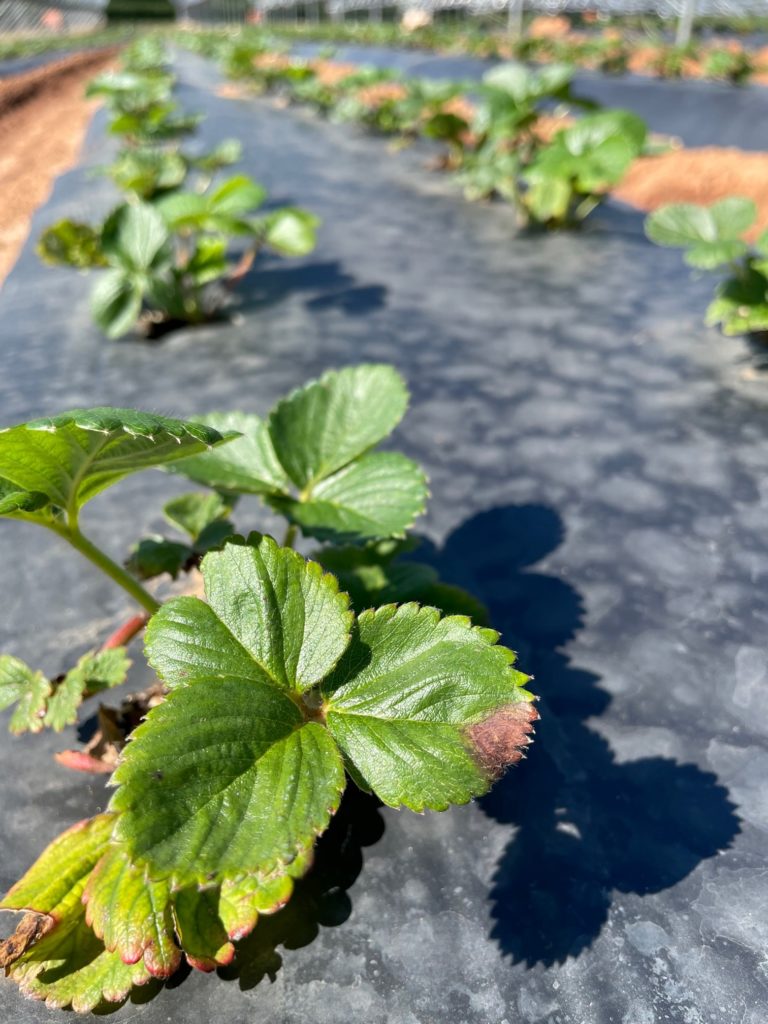The strawberry disease that has been observed in Florida and Georgia this season has now been observed in Alabama.
Neopestalotiopsis leaf spot and fruit rot has been detected in two Alabama counties. The fungal disease was reported on leaves at strawberry farms in Chilton and Baldwin counties during the first couple of weeks in April. The disease is still new to Alabama after having been first reported in 2022. It was found in four counties.

Neopestalotiopsis causes leaf and fruit spots initially, but eventually infects roots and crowns. This will lead to plant wilt and death. Producers who are scouting for the disease should be aware that leaf spots can be tan-to-dark brown of various sizes and irregularly distributed on infected leaves.
Fruit rot begins as lesions that are dry, light-tan, slightly sunken and irregularly shaped. The lesions can expand may take over the entire fruit.
Neopestalotiopsis causes leaf spots on strawberry plants. It develops quickly and produces spores on the leaves. It can cause severe leaf spotting and fruit rot under favorable weather conditions. The disease has been a concern ever since it was first discovered during the 2018-19 season across five farms in Florida. It was attributed to one nursery source in North Carolina.
More than 20 farms experienced the disease during the 2019-20 season, and the disease was attributed to two nursery sources early in the season in North Carolina and Canada. It was also discovered during the 2020-21 seasons in fields that had it the prior season.
Purchasing disease-free transplants is the best way to avoid disease introduction. Transplants should also be inspected for symptoms of the disease.
Because the disease is similar to other strawberry diseases, Alabama Cooperative Extension System professionals recommend weekly scouting for the disease and, when necessary, submitting samples to the Auburn University Plant Diagnostic Lab for proper identification.









